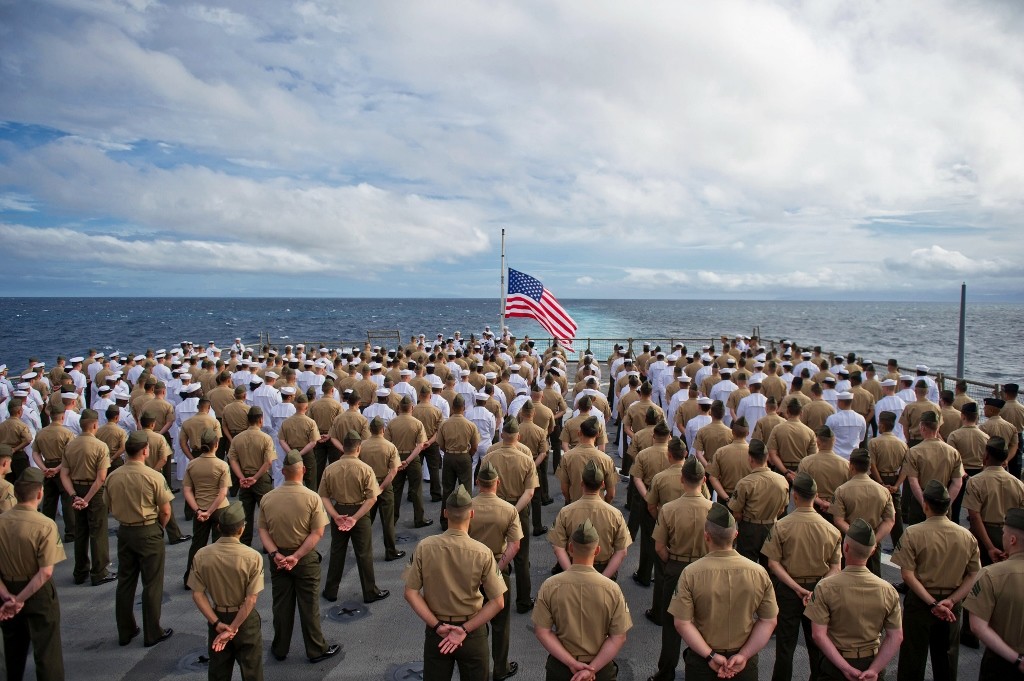Force Modernization and Readiness: A Zero Sum Game?

On June 25th, General Ray Odierno announced that the U.S. Army would cut ten brigade combat teams due to reductions in the defense budget. Combined with cuts that have been previously announced, the Army stands lose 12 brigades totaling 80,000 soldiers. When the drawdown is complete in 2017, the Army will have 490,000 active duty soldiers, slightly more than it had on September 11, 2001.
Odierno was quick to note, however, that these cuts did not take into account sequestration – the automatic $500 billion in cuts that will be applied equally across the Pentagon’s accounts. Should sequestration play out over the next eight years as planned – and there’s currently no reason to believe it won’t – the Army will be looking at additional budget cuts equivalent to 100,000 soldiers.
The Marine Corps is also on track to shrink. The Commandant of the Marine Corps recently announced that sequestration would reduce the Corps by an additional 8,000 marines, down to 176,000.
Having made the decision not to size the military for large-scale, protracted ground combat, policymakers are attempting to prioritize modernization and readiness at the expense of personnel. There are, however, worrying signs that readiness is being sacrificed, and that budgetary pressure will result in the very thing we wish to avoid: a hollow military, which will make it impossible to project real power.
There is an inherent tension between three pillars of defense spending: personnel, modernization and readiness. Finite resources make it impossible to avoid tradeoffs among the three. Thus, planners must balance between the competing needs of each. By reducing Army and Marine ground forces by 108,000, policymakers have decided not to size the force for long-term, protracted ground combat operations. Not only do policymakers appear to have lost their appetite for such campaigns, planners have justified the decision with the not unreasonable assertion that raising manpower will be easier and faster than, say, designing and building an aircraft carrier, tank or fighter. Moreover, a decade of combat operations has left the force with used and abused equipment that badly needs refitting and replacing.
But even as the Department reduces active duty end strength, personnel costs continue to rise. Personnel costs mostly appear in two different accounts within DoD’s budget: personnel and operations and maintenance (O&M). The personnel account is basically military compensation and consists of active duty pay and other cash benefits such as housing and food allowances, special pay and bonuses. O&M includes the many non-cash benefits like healthcare, childcare services, subsidized food and clothing (commissaries and exchanges), and fitness and recreation. Then, there are the deferred benefits for pensions and healthcare for retirees.
For 2013, DoD requested $346 billion for operations and support (O&S), which is simply the sum of personnel and O&M. The Congressional Budget Office (CBO) estimates that despite end strength reductions of five percent, O&S costs will rise to $373 billion in 2017. Since 2001, personnel costs in the base budget have increased by nearly 90 percent or about 30 percent above inflation, while the number of military personnel has increased by only about three percent. Additionally, the O&M costs per service member increased from $55,000 to $105,000 between 1980 and 2001. The CBO projects it will be $161,000 in 2016.
The main drivers of this cost growth are military compensation and health care. Military healthcare costs rose over 170 percent from 2001-2012, from $19 billion to $53 billion. The Center for Strategic and Budgetary Assessments estimates that if DoD spending continues to rise at roughly the rate of inflation, personnel costs will consume the entire DoD budget by 2039.
These costs are crowding out the ability to invest in modernization and readiness of the force, hollowing the budget from within and weakening the defense dollar. The Center for Strategic and International Studies (CSIS) projects that even though the defense topline in 2021 will be $100 billion larger than previous drawdowns, it will only buy an active force that is 34 percent smaller than the force in 1978. CSIS also estimates that in order to maintain the traditional budget figure of 32 percent for modernization, an additional 455,000 active duty troops will need to be cut.
The nature of sequestration in the early years prioritizes modernization over readiness. Major acquisition programs such as the F-35 Joint Strike Fighter, littoral combat ship, Virginia-class submarine, the SSBN(X) and other programs take their ten percent lumps, but such cuts are minor hiccups for these multi-year programs. After all, what difference does one less F-35 mean in 2012? On the other hand, a ten percent cut to the services’ operations accounts has immediate and real impacts. The Air Force is cutting 44,000 flying hours and grounding C-17 squadrons and the Navy is delaying critical refueling and maintenance for the USS Abraham Lincoln aircraft carrier. Army brigades will fail to meet readiness standards for deployment.
Modernization and readiness appear to be locked in a zero sum game. What good is maximum readiness if the force is using broken and obsolete equipment? Conversely, how will the force use the next generation of weapons to their maximum potential if there’s not enough money to train with them? In order to relieve some of the downward pressure on both, personnel must enter the equation; however, reducing end strength will only work up to a certain point. Policymakers must confront the rising costs of the All Volunteer Force if they’re to have a military capable of answering their frequent phone calls.
W. Jonathan Rue is a senior policy analyst at a small consulting firm where he specializes in defense policy and budget issues. A former Marine captain, he served in Iraq as an intelligence advisor.

